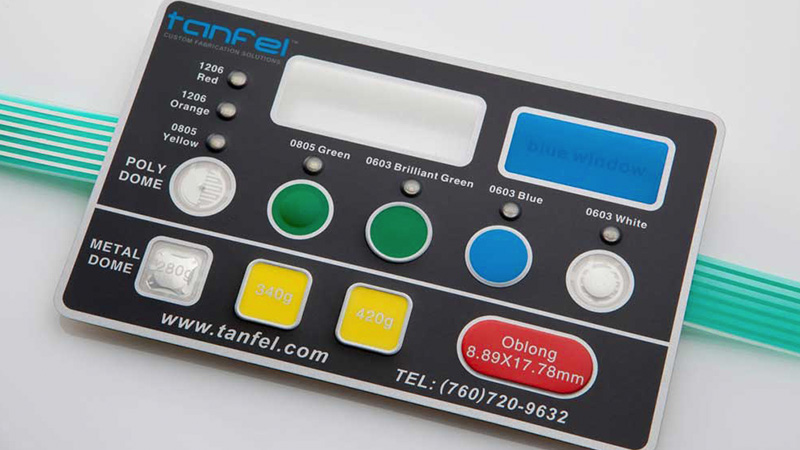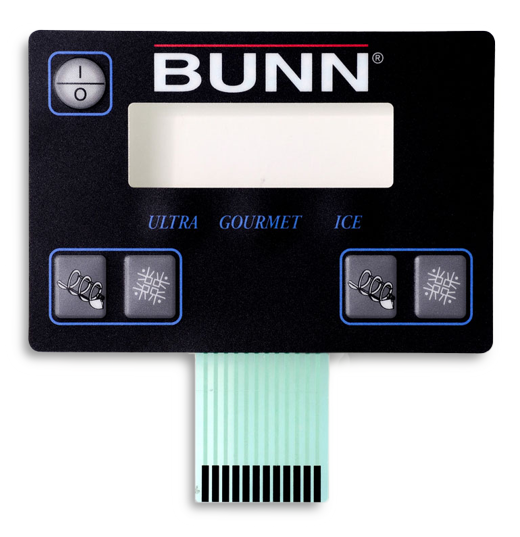Why Membrane Switches Are Preferred for Their Thin and Compact Layouts
Why Membrane Switches Are Preferred for Their Thin and Compact Layouts
Blog Article
The Ultimate Resource on Membrane Changes: Style, Functionality, and Applications
Membrane changes serve as an appealing crossway of layout and performance, playing a critical duty in modern-day user interfaces throughout numerous fields. As we discover the varied applications of membrane layer buttons, it comes to be noticeable that their versatility and sturdiness are important in atmospheres ranging from health care to customer electronic devices.

Comprehending Membrane Buttons
Membrane layer switches are a kind of individual interface innovation extensively utilized in numerous electronic devices, characterized by their thin, adaptable layout and performance. These switches contain several layers that include graphic overlays, adhesive layers, and wiring, allowing a portable and efficient user interface for users. They can be found in devices, medical gadgets, and industrial control board, supplying a trustworthy technique for user interaction.
One of the main advantages of membrane layer buttons is their capability to stand up to pollutants such as dust and wetness, making them ideal for environments where durability is important. Their inconspicuous design permits for seamless combination into various applications, while the adjustable graphic overlays boost individual experience by supplying clear aesthetic responses. Additionally, membrane switches can suit a range of technologies, such as responsive feedback and backlighting, further improving their use.
The production procedure for membrane changes normally includes display printing, lamination, and die-cutting strategies, guaranteeing precision and consistency in manufacturing. Overall, membrane layer switches stand for a efficient and flexible remedy for modern digital tools, integrating performance with aesthetic allure in customer interface style.
Trick Parts and Layout Elements
A variety of essential components and layout components integrated to develop an effective membrane button. At the core, the visuals overlay offers both aesthetic and useful purposes, offering an user-friendly interface while safeguarding internal parts from ecological variables. The choice of products, usually polyester or polycarbonate, affects longevity and tactile responses.
Underneath the overlay, the adhesive layer makes sure the button sticks securely to the substratum, which can be glass, steel, or plastic. The spacer layer is vital, as it keeps the necessary gap between the overlay and the circuit layers, allowing for efficient actuation. Membrane Switches. Circuit traces, normally made from conductive ink or adhesive, are printed on an adaptable substratum, making it possible for electrical signals to be transferred when stress is applied
Layout considerations likewise include the plan of responsive domes or embossing that offer physical responses to the customer, enhancing the general experience. Furthermore, the design and spacing of the switches have to be maximized for simplicity of use, making certain that customers can browse the user interface intuitively. Generally, these parts and design aspects work synergistically to develop a reliable, useful membrane button customized to details applications.
Capability and Operation System
At the heart of efficient functionality for membrane layer switches exists their functional mechanism, which helps with individual interaction with a basic yet reliable design. These buttons operate the concept of stress activation, where a customer applies force to a marked location of the switch (Membrane Switches). This action compresses the layers of the button, completing an electric circuit that sends a signal to navigate to this site the linked gadget
The building and construction normally includes a top visuals layer, a sticky spacer layer, and a bottom circuit layer, which jointly form a durable interface. When stress is used, the top layer breaks down against the lower circuit layer, allowing conductive traces to connect. This design not only allows clear responsive comments however likewise makes certain resilience and integrity, as the buttons are typically resistant to dust and moisture.
Moreover, the versatility of membrane layer switches enables integration with various technologies, including LED signs and microcontrollers, improving their performance. By giving a streamlined user interface that decreases mechanical wear, membrane switches remain a popular option in applications varying from customer electronics to commercial tools, making sure ideal efficiency and individual fulfillment throughout varied atmospheres.
Sorts Of Membrane Buttons

One more considerable group is brightened membrane layer buttons, which include backlighting to enhance visibility in low-light conditions. These buttons are typically used in control panels and control panels where clear exposure is necessary.
Moreover, there are custom-made membrane layer changes created to satisfy details dimensional, visual, and useful demands. These personalizations can consist of special forms, colors, and designs, permitting seamless assimilation right into numerous tools.

Applications Throughout Different Industries
How do membrane buttons improve functionality throughout varied industries? These functional parts are important to read what he said many applications, delivering structured individual interfaces and robust performance. In the clinical market, membrane buttons play an essential role in tools such as analysis devices and client monitoring systems, where dependability and ease of cleansing are critical. Their capacity to endure harsh settings makes them optimal for research laboratory tools and surgical gadgets.
In the vehicle industry, membrane buttons are typically made use of in control panels and control panels, giving user-friendly controls that enhance driver safety and security and convenience. The consumer electronic devices field additionally takes advantage of their personalized and light-weight attributes, enabling streamlined styles for smartphones and home appliances.
Furthermore, membrane layer switches locate applications in commercial automation, where they add to effective equipment procedure and monitoring systems. Their resistance to dust and moisture makes sure performance sought after problems (Membrane Switches). In addition, the food and beverage market employs membrane switches for equipment control, where hygiene and longevity are critical
Conclusion
In final thought, membrane switches stand for a vital advancement in individual interface technology, identified by their distinct layout and capability. The adaptability of membrane switches over facilitates their application throughout diverse sectors, from medical tools to consumer electronic devices.
Membrane switches over serve as an interesting crossway of design and capability, playing a critical duty in contemporary user interfaces throughout various fields.Membrane layer switches are a kind of user interface modern technology extensively used in numerous electronic gadgets, characterized by their slim, flexible style and capability.At the heart of efficient capability for membrane changes exists their operational system, which promotes user interaction via an easy yet reliable design. These switches run on the concept of pressure activation, where an individual uses pressure to a designated area of the button.In conclusion, membrane changes stand for a vital innovation in customer interface modern technology, characterized by their special layout and functionality.
Report this page